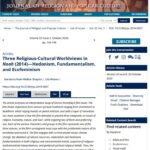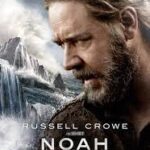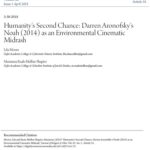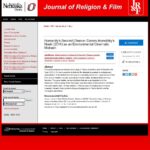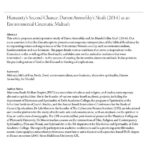The film Noah (2014) is a cinematic Midrash. What does this mean? That it creatively interprates the biblical story of Noah anew, fills in existing gaps in the story, and striving at delivering an ideological message.
This article surveys the sources of inspiration integrated in the film – from the sages’ midrash to Zen Buddhism stories, and explains the film creators’ interpretative choises and their message.
The article (about 11,000 words) featured in the most prominent scientific journal in the field of religious/spiritual cinema – Journal of Religion and Film – published by Nebraska University Press.
Another article by Marianna Ruah-midbar and Lila Moore deal with this movie, and one more article by them is dedicated to the deluge theme in cinema. See links below.
Abstract
This article proposes an interpretative study of Daren Aronofsky and Ari Handel’s film Noah (2014). Our main assertion is that the film attempts to present a contemporary interpretation of the biblical flood story by incorporating values and urgent issues of the 21st century Western society, such as environmentalism, fundamentalism and eco-feminism.
The paper details various traditions that serve as inspirations to the filmmakers in the re-telling of the flood myth, and elaborates on the midrashic traditions that were intertwined – or else omitted – in the process of creating the innovative cinematic midrash.
It also points to the psychologization of God in the film and its theological implications.
Authors
Marianna Ruah-Midbar Shapiro
Lila Moore
Links
For the Journal of Religion & Film’s website – click here.
For the volume’s page on the journal’s website, click here.
For the article’s page on the journal’s website, click here.
For a trailer of the film Noah – click here.
For the official Facebook page of the film Noah – click here.
Date
April 2018
Language
English
Academic/Non-academic
Academic item
Bibliographical citation
Moore, Lila, and Marianna Ruah-Midbar Shapiro, “Humanity’s Second Chance: Darren Aronofsky’s Noah (2014) as an Environmental Cinematic Midrash”, in Journal of Religion and Film 22.2 (April 2018): Article 35.


